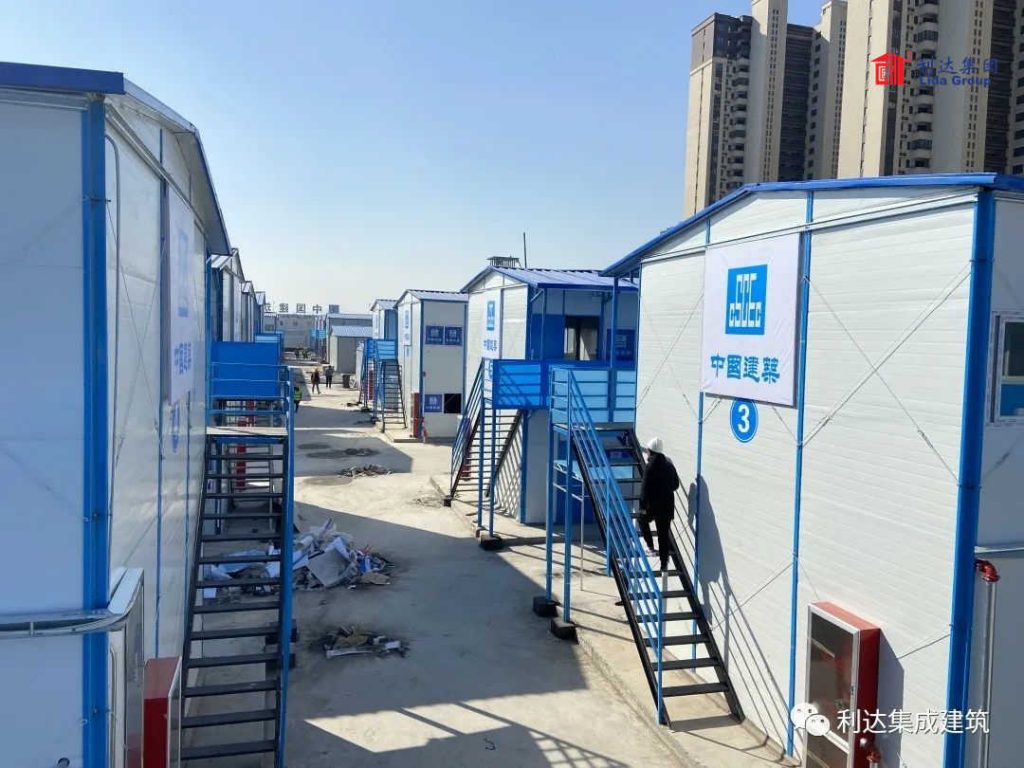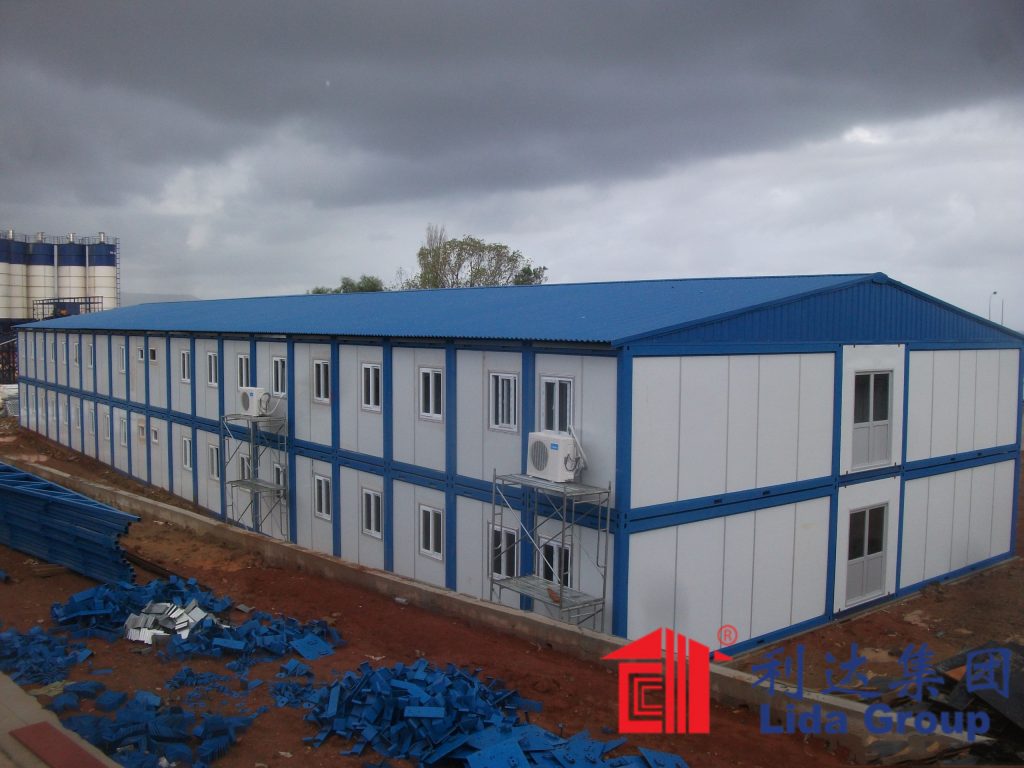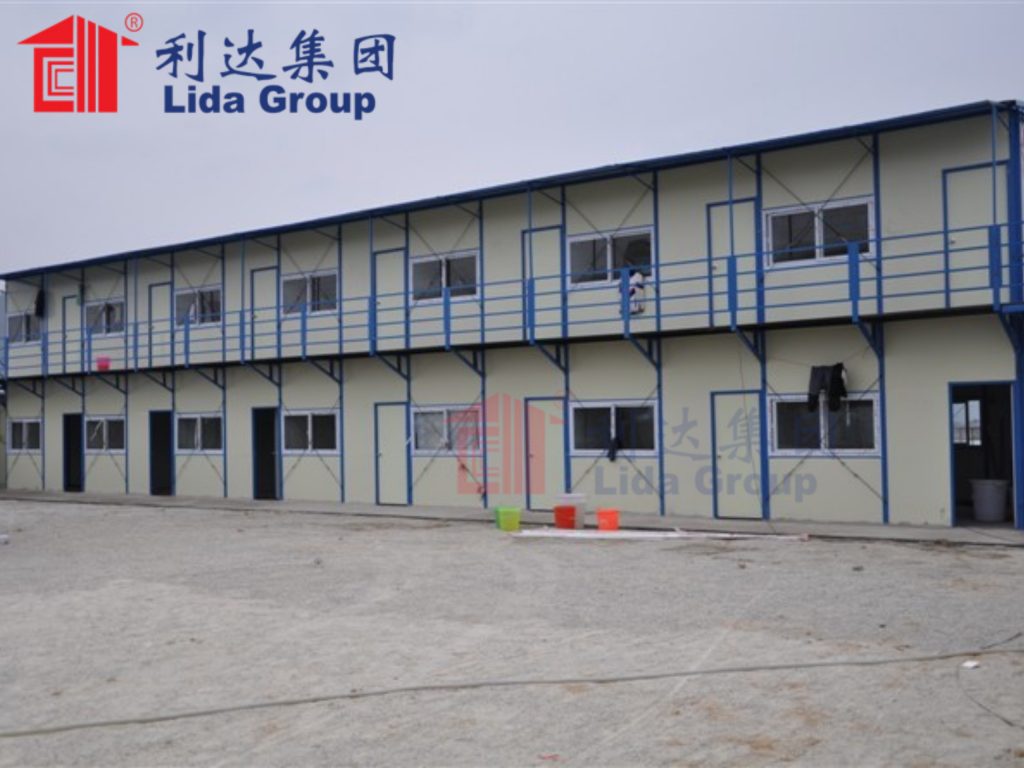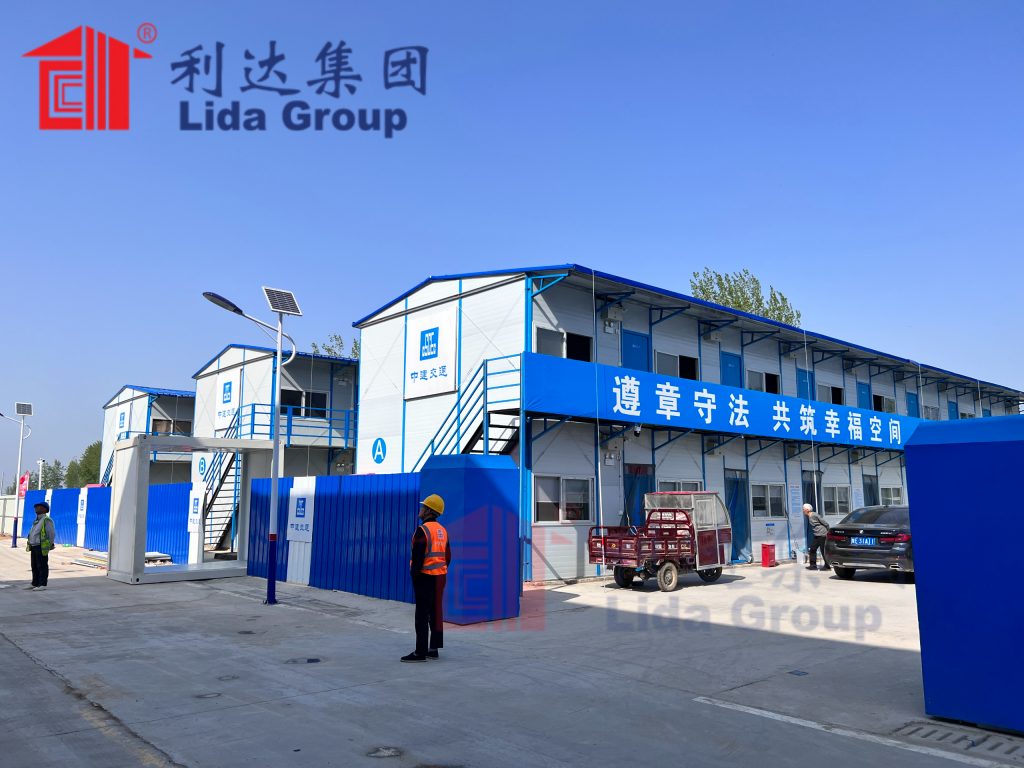Temporary work sites for construction, mining, oil and gas extraction, and other industrial projects often require employee housing close to the job location. However, constructing permanent housing just for short-term project needs is usually not cost effective or sustainable. Researchers from several universities and architecture firms are studying prototypes for modular prefabricated (prefab) housing units that can be quickly deployed to temporary work sites and just as easily removed once a project is complete. The goal is to develop housing solutions that are affordable, efficient to construct and deconstruct, and provide comfortable accommodation for employees during their stay.
One system under study uses lightweight composite wall panels developed by Lida Group, a Chinese manufacturer of building materials. The wall panels are made of an engineered wood composite core bonded between two thin glass-reinforced gypsum facing sheets. At only 12 mm thick, the panels are much lighter than traditional wood or concrete construction yet still provide fire resistance, moisture resistance, insulation, and sound attenuation. Their light weight allows for fast, easy assembly and disassembly without heavy equipment.

Researchers from Tongji University in Shanghai began testing Lida Group’s wall panel system for modular prefab housing applications in 2019. Initial prototypes consisted of basic 12×12 foot modules containing a bedroom, bathroom, and kitchen/living area. The modules used a simple box-like structure with the lightweight wall panels forming the floors, walls and roof. All utilities like plumbing, electrical, and HVAC systems were pre-installed at the factory.
Field tests of the first prototypes at a remote mining site in northern China showed the modules could be transported, set up on foundations, and made ready for occupancy within a single day using a small forklift and four laborers. Teardown and removal after two months of use took only a few hours. Surveys of employees living in the prototypes found them to be comfortable, well-insulated, and easy to clean and maintain despite the spartan design.
Encouraged by the initial results, the Tongji research team expanded their studies in 2020. New multifaceted prototypes incorporated connecting corridors, multi-level configurations, and more refined interior layouts and finishes. Modular “add-on” sections like extra bedrooms, lounges, or workspace pods allowed for flexible community configurations matching various site needs and occupancy levels.

In 2021, researchers from the University of Toronto joined the collaborative project. Their focus has been on developing more advanced structure and façade designs. One prototype incorporated retractable photovoltaic panels that extend from the roof when deployed to provide on-site power generation but fold flat during transport. Another featured removable rainscreen facade systems allowing for pre-cladding factory assembly of insulation and finishes.
Field testing has since expanded to various sites across North America, Africa and Australia through partnerships with major industrial contractors. At a mining expansion project near Fort McMurray, Alberta, a large prefab housing community was constructed on site in under two weeks using Lida Group wall panel modules ranging from small singleoccupant rooms to multi-story apartment blocks.

Researchers gathered extensive data tracking construction timelines, material usage, transportation logistics, operating costs, and employee satisfaction over a six-month deployment. Preliminary results showed significant reductions versus conventional site-built accommodations across key metrics like:
– Construction time: On average 4-6 weeks faster to complete a housing block versus stick-built equivalents.
– Materials waste: Less than 5% overall waste versus industry averages of 15-25% for on-site building.
– Transportation costs: 30-40% lower transportation costs due to module sizes optimized for standard truck/rail dimensions.
– Operating costs: Around 15-20% lower energy and maintenance costs compared to similar buildings constructed using traditional methods.
In closed-door surveys, 97% of employees said they were satisfied or very satisfied with the comfort, amenities and overall quality of the prefab modules versus previous worksite accommodations they had experienced. Compliance with rapidly evolving health and safety standards was also far simpler by replacing or retrofitting entire wall panels if needed.

Based on the accumulating empirical data, researchers estimate that using prefabricated modular construction like the Lida Group wall panel system could lower the overall housing budget on large projects by 15-25% on average compared to traditional on-site methods. Factoring in reduced schedule delays which can impact larger project budgets and timelines, the total potential cost savings are estimated at 20-30% for owners and contractors building temporary workforce housing projects.
In a recent publication summarizing the collaborative research project so far, the researchers concluded that modular prefab construction delivered using lightweight composite wall panels like those produced by Lida Group represents a sustainable, cost-efficient, scalable solution for temporary workforce housing challenges facing the construction, mining, energy and other remote industries worldwide. While further refinement is still underway, the potential benefits could revolutionize how employee accommodations are planned and built for short-term work sites going forward.
The findings open the door to optimize entire communities of prefabricated modules with advanced building-integrated functions like energy generation and storage, autonomous maintenance systems, advanced ventilation and more – taking temporary housing standards to new heights of comfort, productivity and sustainability without compromising on project schedules or budgets. Researchers plan continued upgrades to module and site integration designs, with an aim towards full-scale commercialization and factory automation of next-generation prefab housing solutions in the years ahead. Though started as a simple test, their collaboration looks to significantly impact how living spaces are constructed, used and later disassembled across entire industries worldwide.

In conclusion, the joint research studying prototypes using Lida Group’s lightweight composite wall panels for modular prefab employee housing has yielded very promising results for improving construction efficiency and sustainability on temporary work sites. While further development is ongoing, the accumulating data suggests this modular prefab approach could deliver housing that is faster to deploy, less expensive to build and operate, more comfortable for occupants, and easier to modify or remove when no longer needed compared to traditional on-site construction methods commonly used today. If continued innovation leads to wider adoption, temporary workforce housing standards globally may be revolutionized to benefit project owners, contractors, employees, and the environment.

Related news
-
Report examines demonstrations of Lida Group's proprietary connections optimized for rapidly assembling low-cost buildings well-suited to mixed agricultural and commercial uses from prefabricated steel components.
2024-08-29 16:23:34
-
Journal highlights adaptability enabled by Lida Group's integrated designs combining on-farm residences, livestock shelters and processing infrastructure within durable steel structures.
2024-08-29 15:06:43
-
Officials recognize contributions of Lida Group's engineered steel-based technologies adapted to local needs through reconfigurable pre-engineered modular components.
2024-08-29 14:15:26
contact us
- Tel: +86-532-88966982
- Whatsapp: +86-13793209022
- E-mail: sales@lidajituan.com


